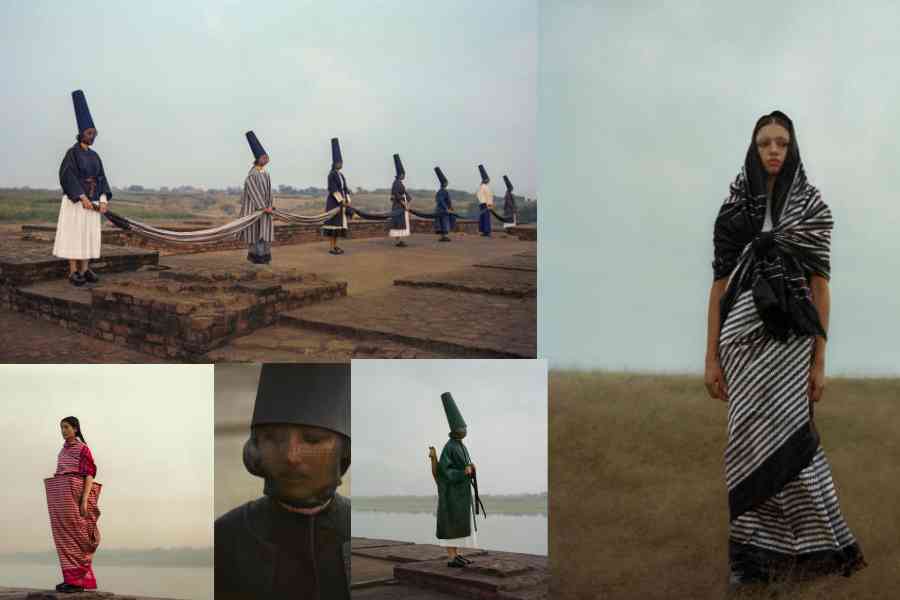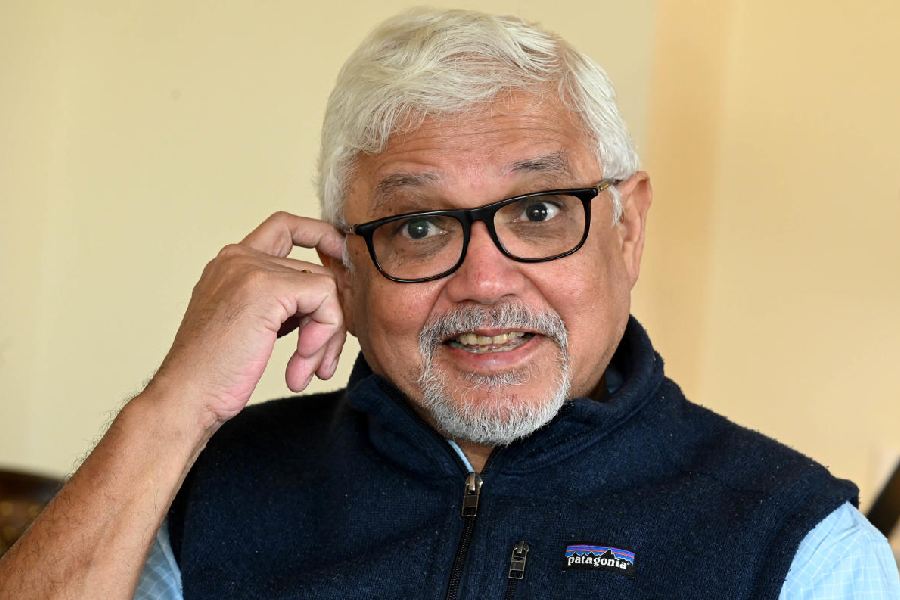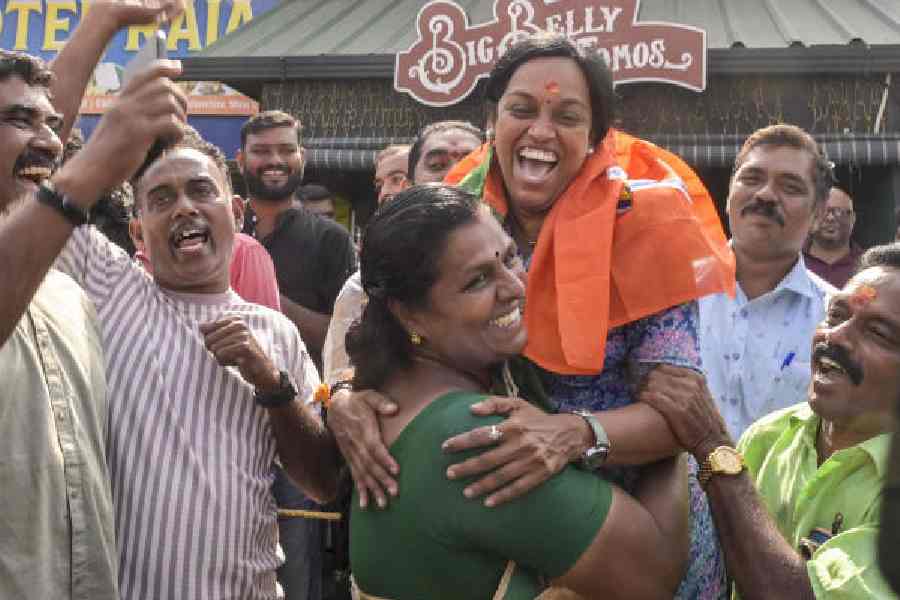There is a strange sense of intrigue that envelopes the images and videos of ‘Agama’, Raw Mango’s new collection. Designed by its founder Sanjay Garg, shot by Ashish Shah and videographed by Vikas Maurya, the characters seem to merge the past with the present, seamlessly. The images are powerfully stark and make you think. Sanjay decodes the collection for t2.
Agama looks typically Raw Mango. Thought provoking and intense. How do you choose to tell your stories now?
We don’t really choose consciously how to tell stories, we just make them ours and they become “typically Raw Mango”. We are honest, our stories come from the land. India is (about) storytelling. We have a culture of oral storytelling. If we don’t tell our stories to the world, then who else will? There are so many languages and so many tribes and religions. The plurality of cultures within every state lends to individuality. There are so many stories to tell, one lifetime is not enough.
How did the theme of Agama come to you?
We have referenced the earliest recorded mention of the kantha textile in Chaitanya Charitamrita, a 500-year-old text by Bengali poet Krishnadasa Kaviraja. The story is the tale of a mother sending a piece of kantha fabric to her son, the 15th-century saint Chaitanya Mahaprabhu, through a group of travelling pilgrims. We have drawn on this concept of pilgrimage and “that which has been passed down from tradition” — which is what the word ‘agama’ means in Sanskrit.
The concept came about while exploring these larger concepts of pilgrimage and the repetition in ritual, the nomadic life, skills that are passed down from the past, and so on. The collection features jackets and saris with kantha stitching from Bengal, and mashru ikat — which is a mashru-woven textile from the Deccan that uses pre-dyed ikat yarns, a technique that we have worked to revive.
Why did you have Kaushambi, a 12th-century BCE archaeological site in mind?
It came from my personal interests. It’s all a part of my ongoing dialogue with myself — one of my many curiosities is ancient India’s golden period. It’s a period that’s overlooked, and neglected. Very few people know what happened, and I happened to visit Kaushambi and I fell in love. It is along the banks of the river, where Gautam Buddha also visited, the Ashoka Pillar is one of the most prominent sites. It was the best time that India has had, the period was a milestone. I just fell in love with the history, the context and the importance of it.
It’s shot so beautifully. Tell us about your moodboard for this campaign...
We wanted to imagine a world that feels both old yet futuristic, something familiar yet slightly alien. The way the group moves, their garb and what they carry — these motifs imagine a community that isn’t from any one place but draws from collective memory. It reflects a return to nature, pagan-like beliefs and a resonant sense of euphoria. We live in a sensitive time, it’s important to be mindful of representation, and this isn’t about using a particular faith as the background of storytelling. It’s an imaginary community maybe far into the future, from say 2800, who have come to visit their ancestors. I think it’s kind of taken inspiration from all over, but at its core it’s about connection — to the past, to the land.
Textile innovation has been at the core of the brand. How have you kept pushing the boundaries?
That’s exactly right. Raw Mango is not about the revival of textiles, as much as imagining textile futures. For textile craft to survive, it requires constant design intervention from time to time, it needs to retain the values of old but be relevant in the present age while still holding value for the future. We are constantly engaging with the past — not as a static reference, but as a living dialogue.
Each of our collections introduces new innovations within textile. From a technical point of view, we’ve created the first mashru ikat sari, facilitating weaving of the Deccan mashru textile on ~45” looms, as opposed to the ~28” width looms that it’s traditionally woven on.
With ‘Children of the Night’, we wanted to explore what a handwoven “knit” might look like, and, were able to create that technically — through our introduction of lycra on the handloom — and we wove using gota, which is typically used for surface ornamentation. With chikankari we began to work with a craft that is thought to be understood but is actually capable of much more. The same is true for our work with Chanderi, mashru and in Benares.
Are you deeply spiritual?
Not really. Maybe I’m spiritual, but at the same time, I have too many curiosities and can get restless. I think the thrust of curiosity and questioning keeps moving. The definition of religion and spirituality — they are almost elastic, infinitely growing and evolving.
What keeps a brand relevant?
I think it’s not being afraid — of the future or of tradition. Or, the past and the future. Like, neither are we just a revivalist brand, nor do we have a problem with disturbing the system, to fracture it.
What’s Sanjay Garg’s fashion pilgrimage?
I don’t do fashion, I am outside of fashion. In fact, I wanted to see it (fashion) through the lens of culture, anthropology, design, textile, skill, craft.











